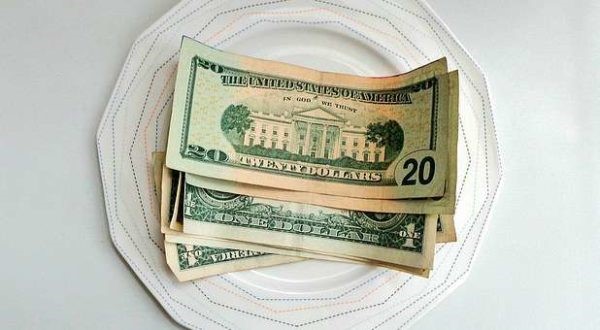We want to help you create powerful fundraising offers.
For a refresher, here’s my definition of an offer: the main thing that you say will happen when the person gives a gift.
Quick Refresher
The most successful fundraising offers tend to have 4 elements:
- A solvable problem that’s easy to understand
- A solution to that problem that’s easy to understand
- The cost of the solution seems like a good deal
- There’s urgency to solve the problem NOW
Today, we’re going to break down element #3, ‘the cost of the solution.’
The Cost of the Solution Seems Like a Good Deal
There are a three main ideas here…
The Cost
When you’re able to tell donors exactly how much it costs for them to make a meaningful difference, donors are more likely to give.
Most nonprofits don’t do this. They say, “Here’s a bunch of stuff we do, please help us today with a gift.”
But in my experience (and the experience of all my mentors), you’ll raise more money if you find/come up with something specific to promise a donor that she’ll help do, and if that something specific has a price.
(Of course, the price for that thing has to be the right size for the donor. But we’ll talk about that below.)
Why is so helpful for donors when you promise that a specific thing will happen if a donor gives a specific amount? Because it shows them how much they need to give for their gift to make a meaningful difference.
To be clear, there are some donors out there who will give just because you work on a cause or people group that they care about. And when you remind them that you’re doing all of that work, some of those donors will give gifts.
But we’ve helped hundreds of organizations start raising more immediately when we help them identify a specific, meaningful part of their process that they can ask their donors to fund.
And then those organizations raise even more money when that specific, meaningful thing has a specific cost.
Because donors love to know what their impact will be. So by being specific about what their impact will be, and how much it will cost, you help your donors be more likely to donate to your organization.
Of The Solution
This might seem obvious, but let’s cover it just in case. The cost that you mention above needs to be for the exact solution in your offer.
- If you’re talking about feeding a person, the cost needs to be for a meal.
- If you’re talking about advocating, the cost needs to be for some meaningful part of advocating.
This often goes sideways when organizations follow this tactic almost to the very end… but not quite. For instance, an advocacy group will talk about how “$50 trains 50 volunteers to advocate effectively for the cause.” That’s a great offer. But then the letter will end with, “Please donate $50 to help us do all the things that we do.”
No. Stay on target. End the letter with, “Please donate $50 to train 50 volunteers today!” Then the reply card should say something like, “Here’s my gift to train volunteers.”
Seems Like a Good Deal
Donors are generous, compassionate, value-conscious humans.
Donors love it when they feel like they are “getting a good deal” on their donation.
This is why matching grants work so well! To a donor, it feels like she gets to have twice the impact for what she normally gives. To her, it feels like her impact has gone on sale for 50% off.
Because of donors’ desire to get a good deal, offers tend to work better when the cost of the solution seems like a good deal. Let’s look at some offers we’ve had tremendous success with:
“$1.92 to feed a homeless person Thanksgiving dinner” seems like a good deal.
“$300 to cure a person of a major disease” seems like a good deal.
“$10,000 to send an underprivileged girl to an Ivy League college for a year” seems like a good deal
“$50 to join my neighbors in the fight against cancer” seems like a good deal.
“Your impact will be DOUBLED by matching funds” seems like a good deal.
As you create your own offers, look for a couple of things to help show donors how they are getting a good deal:
- Small parts of big processes that make a big difference. Things like “the cost of airfare to help an adoptive family meet their new child” or “the cost of internet streaming services so that people around the world can watch our sermons.” See how those examples are small parts of big processes – but they seem to have an outsized impact?
- Anything that has a multiplier. If you use volunteer hours or grants of any kind to help a process or part of a process, that means the cost of that process is lower than it would normally be. For one organization, we helped them see that they were providing over $200-worth of service to local families for just $50. So now their main offer is, “Just $50 provides over $200 worth of help to a local family to stop domestic violence.”
And any time you can get matching funds, get them. You can use them far more than you think before your donors will tire of them. FAR more.
In a nutshell: any time you can convey to donors that “their gift goes farther/has more impact than normal,” you’ve increased your chances of getting a gift. And of getting a larger gift. For instance, matching funds increase both the average number of people who respond AND the size of their average gift!
Other Helpful Advice
Here’s a handful of helpful tips we’ve picked up over the years:
- The offer amount may be different than how much you ask a donor to give. For instance, it may cost $12 to do something meaningful. Your letter or email would repeat the $12 figure often and talk about how powerful it is. Then you’d ask the donor to give you $36 to help 3 people, or $72 to help 6 people, etc.
- In your mass donor fundraising, the cost of the offer will be more successful if it is less than $50. I’ve gone as low as 44 cents. What you’re looking for is a cost/amount that any of your donors can easily say, “Yes, I can do that.”
- Don’t worry if your offer amount is low. People tend to give at the amounts they give at. In other words, if you have a donor who usually gives you about $50, when presented with an offer of $10 she’ll either give you $50 or $60. But she won’t give you $10.
- For major donors, you can create higher-cost offers. For instance, your mass donor offer might be “$50 trains 50 volunteers” while your major donor offer for the same program might be, “$5,000 pays for our volunteer center for the year” Same program, different offer and different price point.
These Funds Can Be Undesignated!
Finally, you might be wondering how you can get specific on the cost of doing one part of what you do AND have the funds be undesignated so that you can use them anywhere you. Go here to download our whitepaper on this very thing!
But Wait, There’s More!
This post was originally part of a longer series about fundraising offers. The next one in the series will show you the final of the four elements: how giving donors reasons to give NOW will dramatically increase the number of gifts you receive.
And remember: if all of this were easy, you and everybody else would be raising piles of money. It takes a lot of thought to create and refine a good offer.
But the payoff is huge – for your organization, your beneficiaries, and for you!
Read the whole original series:
- How to Create a Great Fundraising Offer: What’s an Offer?
- Why a Good Fundraising Offer Works So Well
- The Ingredients in Successful Offers
- How to Describe the “Solution” Your Organization Provides
- How to Raise More Money by Asking for the Right Amount
- How and Why to Give Your Donors a Reason to Give Today
- What About Internal Experts Who Don’t Like Fundraising Offers?
- How to Make Sure a Low-Priced Offer Does NOT Produce Small Gifts
- Half As Important
- Offers for Major Donors
- Summarizing and Closing This Chapter on Fundraising Offers









